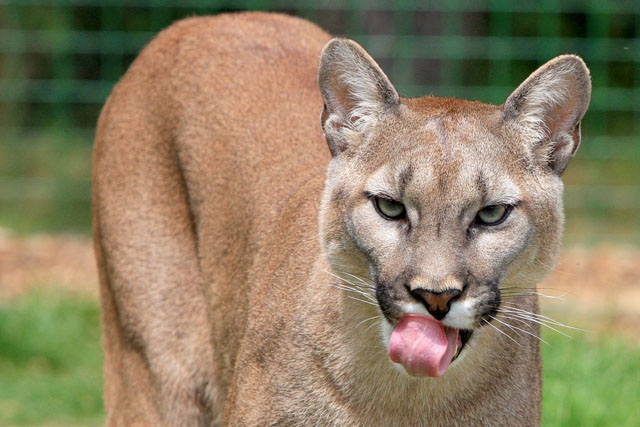



Pumas, also known as mountain lions or cougars, are large carnivorous cats that inhabit various regions of the Americas. As top predators, their diet plays a crucial role in maintaining the balance of the ecosystem they inhabit. In this article, we will explore the feeding habits of pumas and discover what they eat.
Pumas are obligate carnivores, which means that their diet consists primarily of meat. They have evolved as efficient hunters, equipped with sharp teeth and powerful jaws to capture and kill their prey. While they are skilled hunters, pumas are also opportunistic feeders and will scavenge if the opportunity arises.
The main prey of pumas varies depending on their geographic location and the availability of prey species. In general, their diet consists mainly of ungulates, which are hoofed mammals. The most common ungulate prey for pumas include deer, elk, moose, and bighorn sheep. These large herbivores provide a substantial amount of meat and are an important food source for pumas.
Deer, particularly mule deer and white-tailed deer, are a staple in the diet of pumas. These agile cats are well adapted to hunting deer, using their stealth and speed to ambush their prey. Pumas are solitary hunters and rely on their exceptional stalking skills to get close to their prey before launching a powerful attack. They often target young or weak deer, as they are easier to catch and subdue.
In addition to deer, pumas also feed on a variety of small mammals. This includes rabbits, hares, raccoons, porcupines, and beavers. These smaller prey species are easier to catch and provide a valuable source of food for pumas, especially when larger prey is scarce. Pumas are known to be adaptable hunters and will adjust their diet based on the availability of different prey species.
While not a primary food source, pumas will occasionally prey on birds. They have been observed hunting and capturing birds such as wild turkeys, grouse, and waterfowl. Pumas are agile climbers and can use their climbing abilities to ambush birds in trees or pounce on them from above. However, birds make up only a small portion of their overall diet.
Pumas are known to occasionally prey on livestock, such as sheep, goats, and calves. This can lead to conflicts with farmers and ranchers, as pumas may target domestic animals when natural prey is scarce or when they are forced to venture into human-dominated areas. These interactions with livestock can result in economic losses for farmers and can lead to retaliatory killings of pumas.
While pumas are primarily hunters, they are also opportunistic scavengers. They will scavenge on carcasses of animals that have been killed by other predators or have died from natural causes. Scavenging allows pumas to take advantage of available food resources without the need for an active hunt. This behavior is particularly common in areas where competition for prey is high.
Pumas are opportunistic feeders, meaning they will take advantage of any available food source. This includes consuming carrion, such as roadkill or animals that have died due to other causes. Pumas have a keen sense of smell and can detect the scent of a carcass from a considerable distance. They will often feed on carrion when the opportunity arises, ensuring they can sustain themselves even during lean times.
Pumas generally avoid human interaction and prefer to stay away from populated areas. However, as human populations expand and encroach upon their natural habitat, conflicts between pumas and humans can occur. In rare cases, pumas have been known to attack and kill humans, although such incidents are extremely rare. It is important for humans to understand and respect the natural behavior of pumas to minimize the risk of negative interactions.
Pumas play a vital role in maintaining the balance of ecosystems they inhabit. However, they face numerous conservation concerns, including habitat loss, fragmentation, and human persecution. As human populations continue to grow, it is crucial to implement effective conservation strategies to protect puma populations and their prey. By preserving their natural habitat and ensuring the availability of prey species, we can help maintain healthy puma populations and the ecosystems they inhabit.
In conclusion, pumas are carnivorous predators with a diverse diet. While their main prey consists of ungulates such as deer, they are also known to feed on small mammals, birds, and occasionally livestock. Pumas are adaptable hunters and will scavenge when the opportunity arises. Understanding the feeding habits of pumas is essential for their conservation and for maintaining the delicate balance of the ecosystems they call home.
Related posts